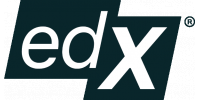- Sur www.edx.org
A Resilient Future: Science and Technology for Disaster Risk Reduction

- À son rythme
- Accès libre
- Certificat payant
- 7 séquences
- Niveau Avancé
- Sous-titres en French
Détails du cours
Déroulé
Chapter 1: Introduction to Disaster Risk Reduction and Science and Technology for DRR
Introduction to basic DRR concepts such as hazard, disaster, vulnerability, risk, capacity and resilience, and to define what is science and technology for DRR.
Chapter2: Science and Technology for Risk Assessment
Presentation of tools and technologies that can help complete hazard, vulnerability, and risk assessments.
Chapter3: Science and Technology for Prevention
Presentation of examples of technologies and structural measures that help to prevent and mitigate risks, the non-structural aspects of prevention, including actors and governance with a science and technology linkage, and case studies that show non-structural science, tools and technology application.
Chapter 4: Science and Technology for Early-Warning and Preparedness
Introduction to early-warning systems and examples of preparedness actions, and discussions on appropriate technologies for preparedness.
Chapter 5: Science and Technology for Disaster Response and Emergency Relief
Introduction to technologies that are used when a disaster strikes and in its immediate aftermath, and show how technologies such as robotics (e.g. UAVs) and ICT can help indisaster response.
Chapter 6: Science and Technology for Post-Disaster Recovery and Reconstruction
Introduction to technologies that can allow the assessment of the damages and presentation oftechnologies that could help to “build-back better.”
Chapter 7: Science and Technology for Resilience and Sustainable Development
Presentation on how science and technologycan help the international, national and local levels to become more resilient against disasters and examples of how science and technology for DRR help to increase resilience. Introduction of risk as an engine for development and general constraints and opportunities on the use of technology for DRR, resilience and sustainable development.
Prérequis
- University degree or equivalent.
- Background in engineering, environmental sciences, architecture, geography, anthropology, international relations or any curriculum sharing a global perspective. This list is not exhaustive. We encourage people of all disciplines and backgrounds to join.
- Motivation, persistence, and interest in learning about disaster risk reduction.
- Notions of statistics and calculus may help participants to better understand some concepts and equations used in somevideos; however, these equations are not key to the success in the course.
Intervenants
Silvia Hostettler
Deputy Director of the Cooperation & Development Center
EPFL
Additional Instructors
Éditeur
L'École polytechnique fédérale de Lausanne (EPFL) est une université de recherche située à Lausanne, en Suisse, spécialisée dans les sciences physiques et l'ingénierie.
L'École polytechnique fédérale de Lausanne est l'une des deux écoles polytechniques fédérales suisses. Elle a été fondée par le gouvernement fédéral suisse avec la mission suivante :
former des ingénieurs et des scientifiques au plus haut niveau international
être un centre national d'excellence en science et en technologie
Fournir un centre d'interaction entre la communauté scientifique et l'industrie.
L'EPFL est considérée comme l'une des universités les plus prestigieuses au monde dans le domaine de l'ingénierie et des sciences. Elle est classée 17e au classement général et 10e dans le domaine de l'ingénierie dans le QS World University Rankings 2015 ; 34e au classement général et 12e dans le domaine de l'ingénierie dans le Times Higher Education World University Rankings 2015.

Plateforme
EdX est une plateforme d'apprentissage en ligne (dite FLOT ou MOOC). Elle héberge et met gratuitement à disposition des cours en ligne de niveau universitaire à travers le monde entier. Elle mène également des recherches sur l'apprentissage en ligne et la façon dont les utilisateurs utilisent celle-ci. Elle est à but non lucratif et la plateforme utilise un logiciel open source.
EdX a été fondée par le Massachusetts Institute of Technology et par l'université Harvard en mai 2012. En 2014, environ 50 écoles, associations et organisations internationales offrent ou projettent d'offrir des cours sur EdX. En juillet 2014, elle avait plus de 2,5 millions d'utilisateurs suivant plus de 200 cours en ligne.
Les deux universités américaines qui financent la plateforme ont investi 60 millions USD dans son développement. La plateforme France Université Numérique utilise la technologie openedX, supportée par Google.

